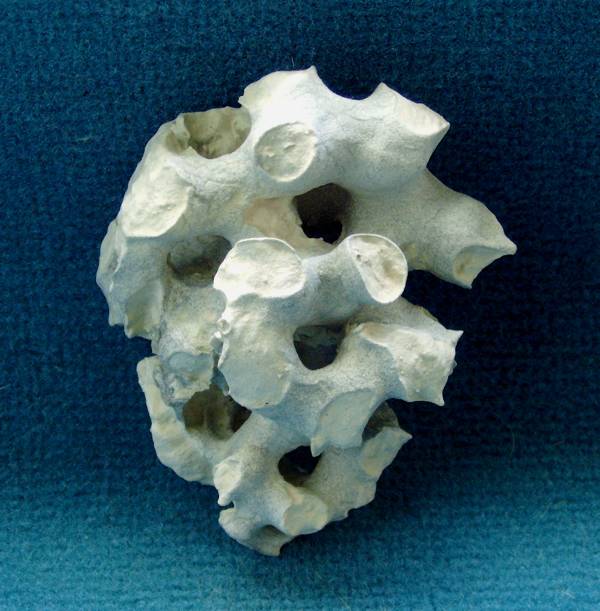
cf. Pararete farreopsis
Carter 1877
The specimen shown here originates from the Lower Campanian of Höver and appears to be similar to or identical with the modern species Pararete farreopsis, known from certain regions in the Pacific Ocean. It is a moderately rare sponge which is difficult to find and even more difficult to prepare.
The specimen consists of a network of branching and anastomosing tubes which terminate in circular oscules at the periphery of the sponge. Judging from the incomplete specimen, the general shape of the sponge appears to be pear shaped. The tube diameters are about 5 mm near the base and gradually increase to 12 to 14 mm near the summit of the sponge. The tube walls are very thin, particularly at the growing edges (one quarter of a millimeter).
The skeleton is made up of hexactines with spherically enlarged nodes. The skeletal structure consists of a regular mesh of cubic cells in the interior of the wall, but becomes more disordered near the gastral and dermal surface, with predomionant triangular meshes.